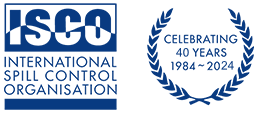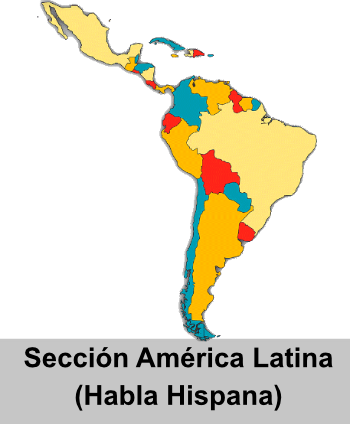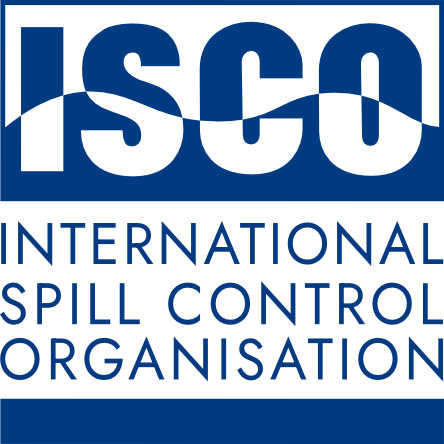This is part of a weekly column which provides the references and abstracts of new peer-reviewed scientific publications on oil spills.

Contributed by Dr Merv Fingas, this weekly column will provide the references and abstracts of new peer-reviewed scientific publications on oil spills. These references are selected on the basis of those papers that provide new insights into the fate, effects and control of oil spills.
Readers may choose to obtain the full publications and to do so, one of three methods is suggested; contact your library, search the internet with the DOI (digital object identifier) provided, or search the internet for the exact title. These are given in the order of likely success in obtaining the article. We hope that this provides useful information. Merv Fingas, ISCO colleague.
Huettel, M.
Oil pollution of beaches (2022) Current Opinion in Chemical Engineering, 36, art. no. 100803 DOI: 10.1016/j.coche.2022.100803
ABSTRACT: Oil contamination of beaches causes significant damage as these ecosystems are unique habitats that provide foraging and nesting grounds for a variety of animals including endangered species, and play pivotal roles in shore line protection and coastal economies. Even small oil spills in the ocean result in sizable slicks that currents transport to sandy beaches that line a third of the global shoreline. Weathering during transit reduces the degradability, viscosity and density of the oil, influencing its fate at the shore. While photolysis, biodegradation, tidal pumping, and seasonal sediment movement facilitate relatively rapid removal of stranded oil from sandy beaches of temperate and warm climes, thick buried oil layers persist for decades in armored gravel beaches of cold shores, emphasizing the controls of beach morphodynamics, biodegradation, and climate in the recovery from beach oil pollution.
Golding, L.A., Kumar, A., Adams, M.S., Binet, M.T., Gregg, A., King, J., McKnight, K.S., Nidumolu, B., Spadaro, D.A., Kirby, J.K.
The influence of salinity on the chronic toxicity of shale gas flowback wastewater to freshwater organisms (2022) Journal of Hazardous Materials, 428, art. no. 128219, .
DOI: 10.1016/j.jhazmat.2022.128219
ABSTRACT: The potential environmental risk associated with flowback waters generated during hydraulic fracturing of target shale gas formations needs to be assessed to enable management decisions and actions that prevent adverse impacts on aquatic ecosystems. Using direct toxicity assessment (DTA), we determined that the shale gas flowback wastewater (FWW) from two exploration wells (Tanumbirini-1 and Kyalla 117 N2) in the Beetaloo Sub-basin, Northern Territory, Australia were chronically toxic to eight freshwater biota. Salinity in the respective FWWs contributed 16% and 55% of the chronic toxicity at the 50% effect level. The remaining toxicity was attributed to unidentified chemicals and interactive effects from the mixture of identified organics, inorganics and radionuclides. The most sensitive chronic endpoints were the snail (Physa acuta) embryo development (0.08–1.1% EC10), microalga (Chlorella sp. 12) growth rate inhibition (0.23–3.7% EC10) and water flea (Ceriodaphnia cf. dubia) reproduction (0.38–4.9% EC10). No effect and 10% effect concentrations from the DTA were used in a species sensitivity distribution to derive “safe” dilutions of 1 in 300 and 1 in 1140 for the two FWWs. These dilutions would provide site-specific long-term protection to 95% of aquatic biota in the unlikely event of an accidental spill or seepage.
Patterson, S.A., Denton, D.T.J., Hasler, C.T., Blais, J.M., Hanson, M.L., Hollebone, B.P., Rodriguez-Gil, J.L., Langlois, V.S., Patey, G., Yang, Z., Orihel, D.M. Resilience of larval wood frogs (Rana sylvatica) to hydrocarbons and other compounds released from naturally weathered diluted bitumen in a boreal lake (2022) Aquatic Toxicology, 245, art. no. 106128
DOI: 10.1016/j.aquatox.2022.106128
ABSTRACT: The risks to aquatic wildlife from spills of diluted bitumen (dilbit) into inland waters are poorly understood. In this paper, we describe the response of larval wood frogs (Rana sylvatica) to hydrocarbons and other compounds released from experimental spills of dilbit in a temperate boreal lake. To simulate a wide range of environmentally relevant oil spill scenarios, different volumes of Cold Lake Winter Blend dilbit (0, 1.5, 2.9, 5.5, 18, 42, 82, and 180 L) were added to 10 m diameter in-lake limnocorrals. Larvae (n = 360) were reared (from Gosner Stage (GS) 25 to ∼42) in land-based aquatic microcosms, where they were first exposed to clean water during a 2-week baseline phase, and then (at GS ∼30), to contaminated water withdrawn from the limnocorrals for 3 weeks. We observed no statistically significant trends in survival, growth, or development of larvae as a consequence of exposure to the chemical compounds released from naturally weathered dilbit. Likewise, neither cytochrome P450 1A biomarkers nor levels of thyroid hormones in wood frogs near metamorphic climax were significantly related to volume of the oil spills. However, there was a modest statistically significant decrease in larval activity (up to 8.7% relative to the control), but no change in other behavioral metrics (i.e., sociality or space use). Our work adds to the limited body of literature on the effects of unconventional oils on aquatic wildlife and helps to inform risk assessments regarding pipeline projects.
Heshka, N.E., Peru, K.M., Xin, Q., Dettman, H.D., Headley, J.V. High resolution Orbitrap mass spectrometry analysis of oxidized hydrocarbons found in freshwater following a simulated spill of crude oil (2022) Chemosphere, 292, art. no. 133415,
DOI: 10.1016/j.chemosphere.2021.133415
ABSTRACT: Negative ion electrospray Orbitrap mass spectrometry was used to analyze water samples taken from a pilot-scale spill tank test of conventional crude oil on freshwater. A 56-day spill test was performed, and water samples were taken at regular intervals throughout the test to determine what changes in water chemistry occur with time. Orbitrap mass spectrometry was used to measure oxidized species in water samples, and oxidized species are analyzed by carbon number, double bond equivalent and hydrocarbon class. Emphasis is placed on changes with time over the course of the spill test, to examine changes by weathering processes that could occur naturally in a field spill scenario. Results demonstrate that while the concentrations of polycyclic aromatic hydrocarbons decrease in the water phase over time, the concentrations of total organic carbon and oxidized species in the water increase with time, where quantities of O2 and O3 species have the highest abundance. Measurement of increasing concentrations and changing relative abundances of these oxidized compounds can be used to assess how oil behaves in a freshwater aquatic environment after a spill.
Yang, M., Zhang, B., Xin, X., Liu, B., Zhu, Z., Dong, G., Zhao, Y., Lee, K., Chen, B. Microplastic-oil-dispersant agglomerates in the marine environment: Formation mechanism and impact on oil dispersion (2022) Journal of Hazardous Materials, 426, art. no. 127825,
DOI: 10.1016/j.jhazmat.2021.127825
ABSTRACT: Microplastics (MPs) can interact with spilled oil to form MP-oil-dispersant agglomerates (MODAs) in oceans. This study investigated the MODA formation mechanism and its impact on oil dispersion during marine oil spill responses. Two types of agglomerates, MODA-1 (MP-in-oil) and MODA-2 (MP-oil droplet-embedded), were identified. The 12 µm-MPs only formed MODA-1, while 45 µm-MPs and 125 µm-MPs formed MODA-1 and MODA-2 due to the surface free energy minimization principle. Impacts of MODA on oil dispersion under different mixing energy levels and seawater salinities were explored. We found that MODA reduced oil dispersion effectiveness under different mixing energy levels. Among three MP sizes, 12 µm-MPs caused the greatest reduction in dispersion effectiveness due to the formation of MODA-1. Pristine 12 µm-MPs reduced dispersion effectiveness by 21.95% under 5.62 × 10−1 W/kg, while pristine 45 µm-MPs and pristine 125 µm-MPs decreased it by 5.85% and 1.83%, respectively. In addition, MODA formed by pristine MPs has a larger impact on oil dispersion effectiveness than that of aged MPs under different salinities. Under 20psu, pristine 12 µm-MPs reduced dispersion effectiveness by 33.68%, while aged 12 µm-MPs decreased it by 24.61%. This study is the first report on the MODA formation mechanism, which is essential for exploring MODA transport and toxicity through marine trophic levels.
Iturbe-Espinoza, P., Bonte, M., Gundlach, E., Brandt, B.W., Braster, M., van Spanning, R.J.M. Adaptive changes of sediment microbial communities associated with cleanup of oil spills in Nigerian mangrove forests (2022) Marine Pollution Bulletin, 176, art. no. 113406,
DOI: 10.1016/j.marpolbul.2022.113406
ABSTRACT: The objectives of this study were to assess the influence on microbial communities resulting from i) the physical removal of free oil (pre-treatment or post-treatment), and ii) the level of oiling within a contaminated former mangrove forest. Sediment samples were collected before and after the removal of free oil. Before the process of remediation, a highly biodiverse mangrove microbiome which had adapted to history of recurring oil spills was observed. After removing the surface oil, the microbial diversity of the sediments reduced, with members of the phyla Firmicutes and Proteobacteria becoming dominant. This indicates that while water flushing reduced overall microbial diversity, it stimulated the growth of a more specialized bacterial community reported to be involved in hydrocarbon biodegradation. These results provide new insights on microbial communities and their succession in mangrove forest sediments, that will be useful for monitoring oil cleaning programs using water flushing to remove free oil.
Rao, V.T., Suneel, V., Alex, M.J., Gurumoorthi, K., Thomas, A.P. Assessment of MV Wakashio oil spill off Mauritius, Indian Ocean through satellite imagery: A case study (2022) Journal of Earth System Science, 131 (1), art. no. 21,
DOI: 10.1007/s12040-021-01763-3
ABSTRACT: Abstract: Accidental oil spills in the near-shore regions create severe impacts on coastal environments. The bulk carrier MV Wakashio ran aground off Southeastern Mauritius (SEM) on 25 July 2020, resulting in ~1000 tons of oil spillage into the Indian Ocean. The Sentinel-1 synthetic aperture radar (SAR) imagery is used to track and delineate the spilled oil and the affected coastal regions of Mauritius. The results depict that the spilled oil is primarily drifted towards the northwest, and beached along the SEM coastline, covering an area of ~24.42 km2 on 10 August. Within 6 days, the prevailing spill spreading has significantly reduced to ~5.1 km2 (on 16 August) and was almost the same even on 22 August. Subsequently, the spill spreading area has diminished further and more or less disappeared on 15 September. The assessment of SAR imagery corresponding to prevailed winds, tides, Stokes drift and currents illustrated that the spill has primarily drifted northwestwards owing to the force instigated by winds, Stokes drift and tides. This study recommends Sentinel-1 imagery to assess any such oil spill incidents in the future. Highlights: Sentinel-1 satellite imagery has successfully captured the spreading of the Wakashio spill. The northwestward drift of spill was primarily due to wind, Stokes drift and tides. The spill deposition is significant along 28 km of coastline from Pointe d’Esny. There was no significant evidence of the southward movement of the oil spill.Sentinel-1 provides a promising imagery results to study any oil spill event.
Saunders, L.J., Rodriguez-Gil, J.L., Stoyanovich, S.S., Kimpe, L.E., Hanson, M.L., Hollebone, B.P., Orihel, D.M., Blais, J.M. Effect of spilled diluted bitumen on chemical air-water exchange in boreal lake limnocorrals (2022) Chemosphere, 291, art. no. 132708,
DOI: 10.1016/j.chemosphere.2021.132708
ABSTRACT: Following spills into water, petroleum oils can spread widely and produce surface slicks. Resulting slicks may impede volatilization and possibly increase chemical persistence in water. While the influence of oil films on chemical air-water exchange has been examined through theoretical and laboratory studies, field studies have not been conducted to assess the relevance of these effects following actual oil spill events. Here we evaluated the effect of diluted bitumen (dilbit) experimentally spilled in limnocorrals installed in a boreal lake on the volatilization of sulfur hexafluoride (SF6), a non-reactive volatile tracer gas. Dilbit spills were monitored over 70 days and SF6 was introduced twice (after 7 and 48 days) to evaluate the influence of spilled dilbit on the loss of SF6 from water. Volatilization rate constants of SF6 (kVOL) significantly decreased by up to 80% with increasing total dilbit spill cover. Using a theoretical equation, decreases in kVOL were largely explained by a reduction in open water area where chemical exchange across the air-water interface occurs. Apparent effects of the slick on SF6 mass transfer were estimated to be smaller by comparison (20%). To account for this reduction in volatilization, oil spill fate models should include a correction to consider the impact of spill cover on the air-water exchange of organic chemicals.





